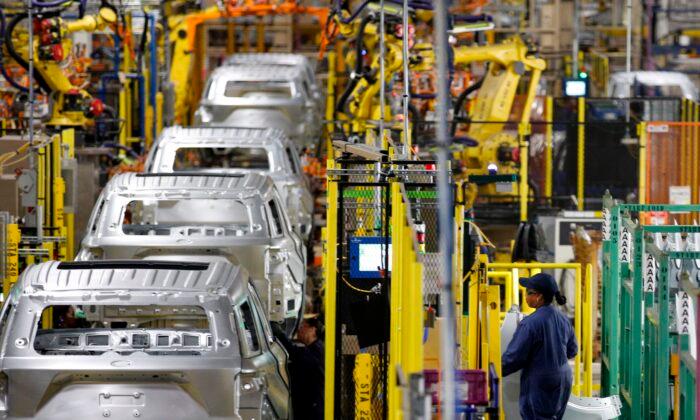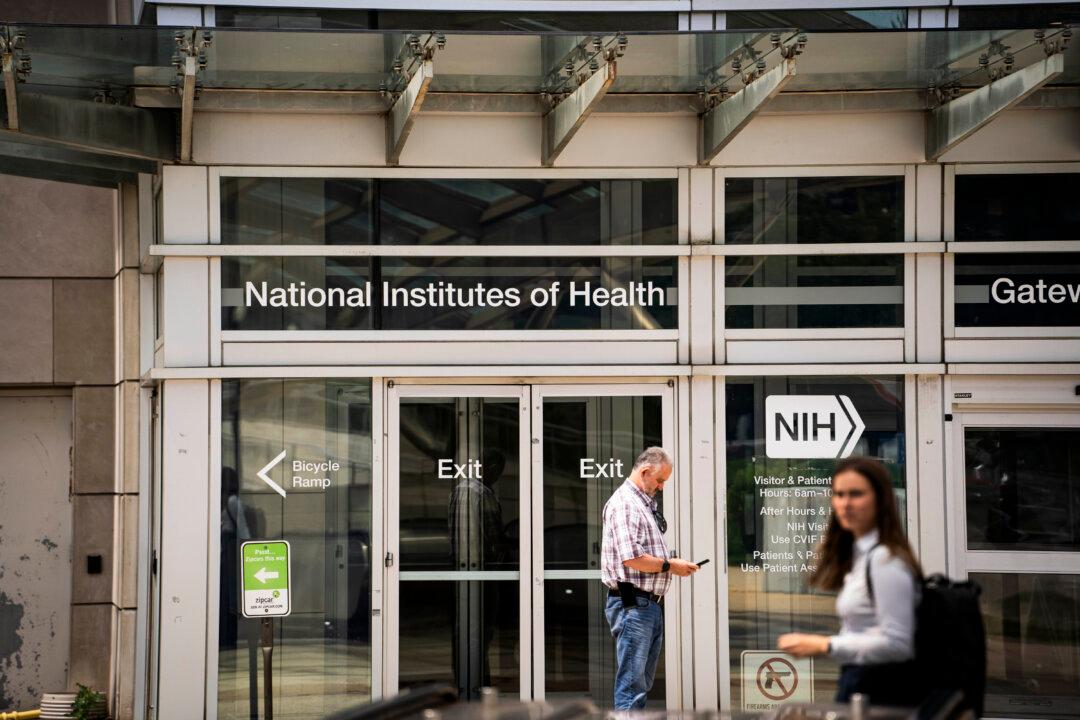U.S. factory orders fell into negative territory for the first time since October 2020, delivering a fresh sign that the U.S. manufacturing sector is suffering a slowdown.
The U.S. Census Bureau announced on July 5 that orders for U.S. manufactured goods declined by 1 percent in year-over-year terms in May, the first time in 31 months that the gauge has dipped below zero.
“The closer we get to the 2024 presidential election, the more the economy is slip slidin' away,” economist Anthony Sanders, former director of MBS/ABS Research at Deutsche Bank, wrote in a blog post commenting on the numbers.

In month-over-month terms, factory orders experienced a modest increase of 0.3 percent in May. While the reading marks the fifth month-over-month gain within the past six months, it was well below market forecasts of 0.8 percent growth.
“U.S. factory orders rose for a third straight month in May, but the trend has turned negative for the year-over-year comparison,” James Picerno, director of analytics at wealth management firm The Milwaukee Company, wrote in a tweet.
Manufacturing Falls Deeper Into Recession
Other data released in recent days confirm that the U.S. manufacturing sector has fallen deeper into recession territory.The Institute for Supply Management (ISM) said in a July 3 report that its manufacturing purchasing managers index fell to 46 last month, the lowest reading since May 2020 and the eighth consecutive sub-50 reading.
The negative May manufacturing data extend a multi-month slump as experts warn that the economy faces obvious challenges.
Overall, the ISM data “suggest the economy faces clear challenges,” the ING team wrote.
The Producer Price Index—which reflects price changes by manufacturers, farmers, and wholesalers—fell by 0.3 percent month-over-month in May to an annualized reading of 1.1 percent, according to the latest data from the Bureau of Labor Statistics.
The decline in wholesale inflation comes after just over a year of Federal Reserve rate hikes, which have had a cooling effect on the economy, sparking recession concerns.
The Federal Reserve Bank of Atlanta’s GDP nowcast, a real-time estimate of U.S. economic output, shows the economy growing in the second quarter at 1.9 percent on July 3, down from 2.2 percent on June 30.
Even though Biden administration officials have expressed confidence in the economy and don’t expect a recession, there are signs of cooling.
Fed Expects Recession
Federal Reserve economists still expect a recession starting later this year, according to minutes from the June Federal Open Market Committee (FOMC) policy meetings that were released on July 5.The economic projection put forward at the most recent FOMC policy meeting states that the central bank still anticipated a “mild recession” later this year, taking into account the projected further tightening of bank credit conditions and the already existing tight financial conditions.
The tepid downturn would then be “followed by a moderately paced recovery,” per the minutes.
Gross domestic product (GDP) was predicted to decelerate in the second and third quarters “before declining modestly” in the fourth quarter of 2023 and the first quarter of 2024.
Members of the interest rate setting panel also agreed that inflation conditions call for more rate increases ahead but at a slower pace.
The current benchmark federal funds rate is currently within a range of 5 to 5.25 percent, with investors widely expecting a quarter-point bump at the central bank’s next policy meeting at the end of July.
Traders are betting on an 88.7 percent chance that the Fed will hike rates by a quarter percentage point after pausing last month, according to CME Group’s FedWatch tool. At the same time, they’ve priced in just a 17.7 percent chance that the Fed will deliver another increase in September, suggesting that investors are expecting softer economic conditions that will put pressure on the central bank to not hike rates further.
Federal Reserve Chair Jerome Powell said recently that the U.S. economy should expect tighter monetary settings going forward and that inflation probably won’t return to the central bank’s 2 percent target for a few more years.
“We believe there’s more restriction coming,” Mr. Powell told a European Central Bank forum on June 28.





